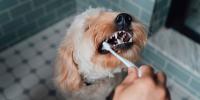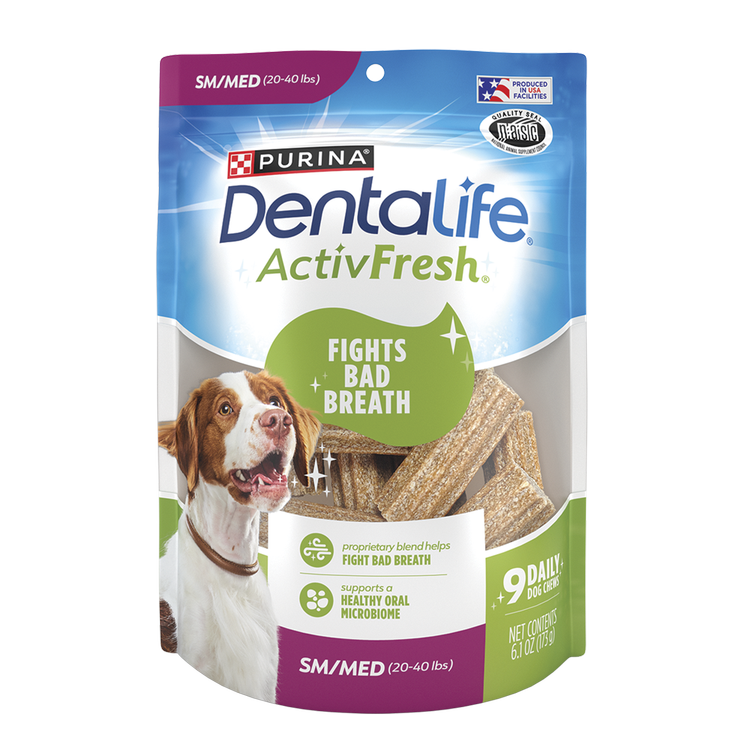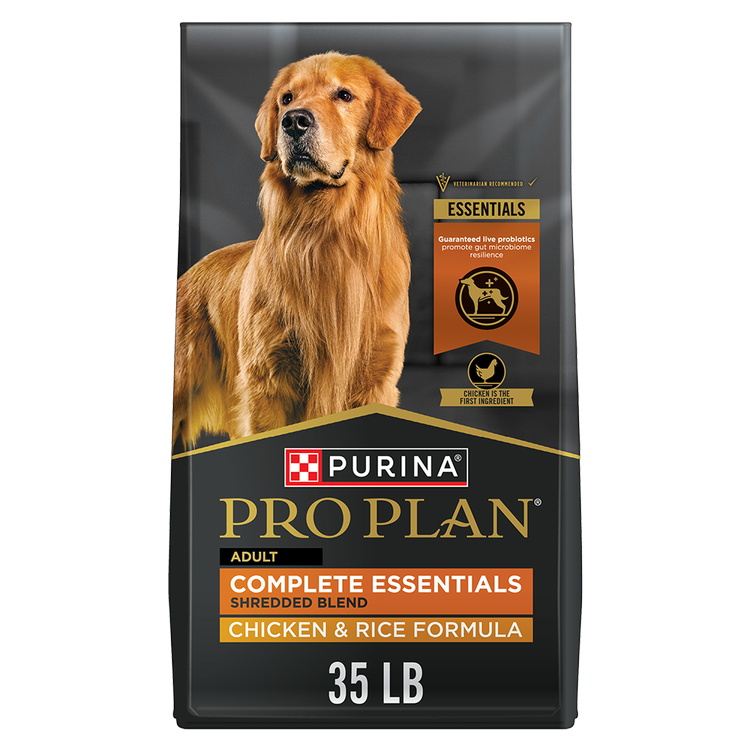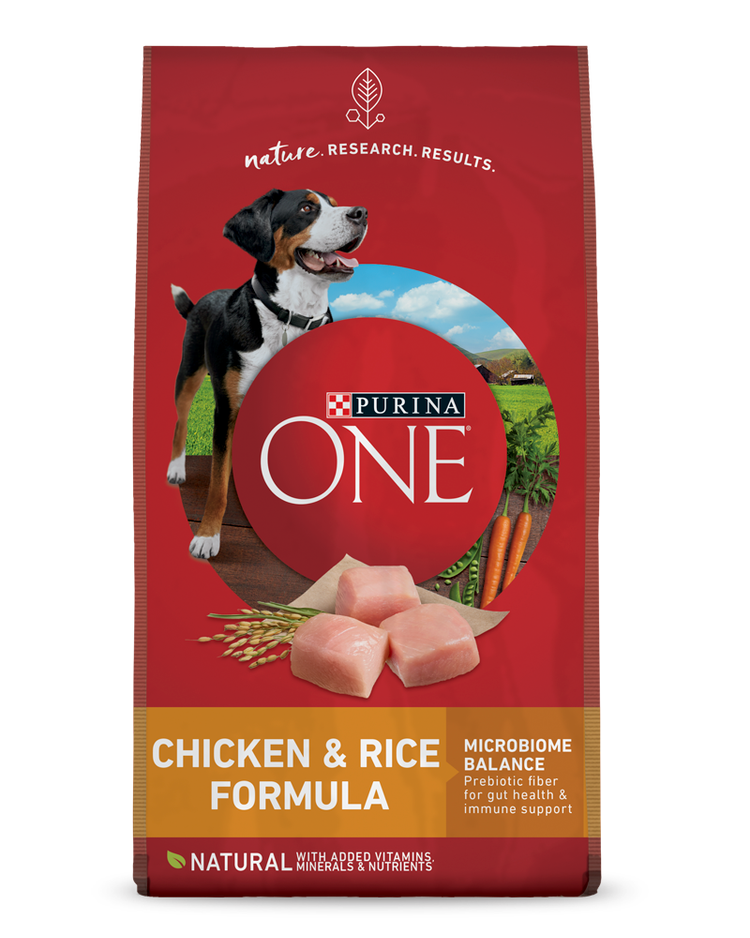Dog Dental Care for Healthy Teeth


Dog dental care is essential to your pet’s overall health. It can be easy to overlook, though, as problems with teeth and gums aren’t always obvious if you don’t know what to look for.
Neglecting oral care can have negative consequences. eighty to ninety percent of dogs over the age of 3 have some form of periodontal disease, while unhealthy teeth and gums have been linked to liver and heart disease.*
Small breed dogs in particular are at risk of dental disease due to crowding of their teeth.
Now for the good news. Whether its regular teeth brushing or feeding a diet of dry food, there are steps you can take to keep your canine companion feeling healthy and happy.
Here are some guidelines to help you promote dog dental health.
What Do Healthy Dog Teeth Look Like?
Healthy dog teeth are white and free of plaque, tartar and chipping. While teeth are important, don’t forget to check your pet’s gums (the tissue around the base of the teeth) as well. Gums should be pink without any swelling or bleeding.
Signs of Bad Teeth in Dogs
Dogs don’t always show their pain, so you might have to check for signs of dental distress. If you see any of the following symptoms, your canine may have some form of dental disease:
- Discolored teeth
- Swollen or irritated gums
- Tooth loss
- Pawing at the mouth
- Drooling
- Bad breath
- Bleeding from the mouth
- Taking longer to finish meals
What Causes Bad Teeth in Dogs?
If you want to provide good dog oral care, it can help to know which dental problems can affect your pet.
Here are some of the most common types of oral issues and dental disease.
Plaque
Plaque is a film of bacteria left behind by the food your dog eats. Without regular brushing, plaque may form gaps or pockets between the teeth and gums. It may also harden to form tartar, which can build up and irritate the gums.
Gingivitis
If tartar builds up on your dog’s teeth, it may lead to gingivitis – inflammation/reddening caused by a bacterial infection. Left untreated, gingivitis can destroy gum tissue and may result in loose or lost teeth.
Periodontitis
Periodontitis refers to the extensive damage to your dog’s gums, ligaments and bone in their mouth. Because it results from years of tartar and gingivitis, it’s usually more common in adult and senior dogs.
How to Provide Dog Dental Care
Prevention is key to dog teeth care. Here’s how to keep your pet’s teeth and gums clean while reducing the chances of dental disease.
Get Professional Dog Oral Care
Your dog’s dental health needs depend on factors like breed and DNA. These may determine how early they require care from your veterinarian.
Often, though, professional cleanings and checkups begin around age two (although you can start oral care at home once your canine’s adult teeth come in). After that, their teeth and gums should be checked at least annually.
In order for your veterinarian to do a full dental examination, they need a complete view of your dog’s teeth and gums. In addition to a visual inspection, they will also likely take X-rays of their mouth (this requires anesthesia).
They will also thoroughly clean plaque and tartar from the teeth as well as from the crowns and roots.
Your veterinarian may polish your dog’s teeth and rinse with fluoride to strengthen tooth enamel as well.
Brush Your Dog’s Teeth
You’ve surely heard the advice from your own dentist: Brushing teeth helps remove plaque and tartar while promoting healthy gums. The guidance is true for dogs as well (and cats for that matter).
If your pet will allow it, brushing daily is ideal; twice per week is also good. Just remember to let your veterinarian do a dental examination first. You don’t want to accidentally touch a painful area while cleaning.
If possible, get your dog accustomed to having their teeth cleaned at home on a regular basis when they’re still a puppy.
Learn more about how to keep a dog’s teeth clean, including instructions on how to brush, and what to do if your pet rejects the toothbrush.
Feed Dry Food Diet
If you currently feed your dog dry food, you’ve already taken an important step in fighting dental disease.
As the dog chews, particles from the kibble gently scrape against their teeth, acting like a toothbrush to help remove plaque.
If necessary, your veterinarian may also recommend a dental diet consisting of dry food formulated for oral health which can help manage tartar or both plaque and tartar.
Dog dental chews can also be effective at reducing plaque and tartar.
Puppy Dental Care
Your veterinarian can advise you on how to care for your dog’s teeth before they turn six months old. This is the age when most canines will develop their adult teeth.
Once the adult teeth come in, it’s a good time to introduce a puppy dental care routine at home, as puppies can be more open to learning and adapting to new things.
Start by gently rubbing your fingers on their mouth. Once they’re used to this, you can put dog toothpaste on your finger to brush their teeth, and eventually move to a toothbrush.
Providing dog dental care can help prevent disease, minimize pain and even strengthen the bond between you and your canine companion. If you have any questions on what to do, contact your veterinarian.
For more dog health tips, visit our Pet Expertise page for guidance from our experts.
*Cornell Margaret and Richard Riney Canine Health Center. (2022). Dreaded Dental Disease. Dogwatch, 26(10), 4-5.
Related articles

Reward Yourself with myPurina
Earn and redeem rewards for Purina products with the myPurina app.






